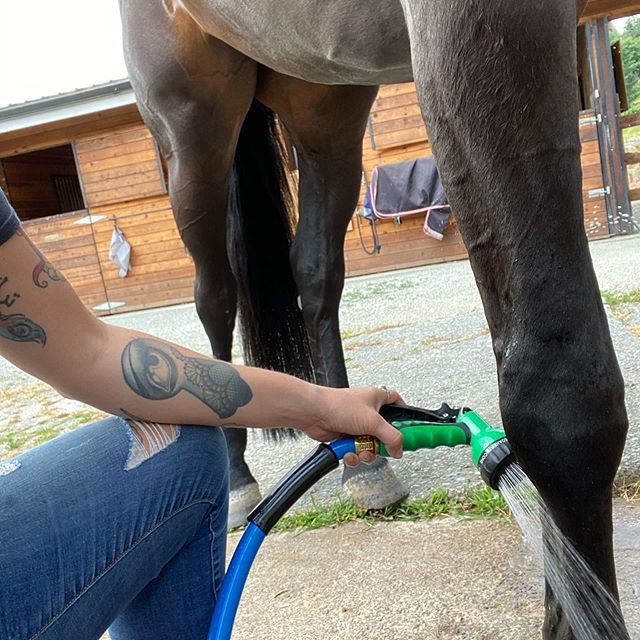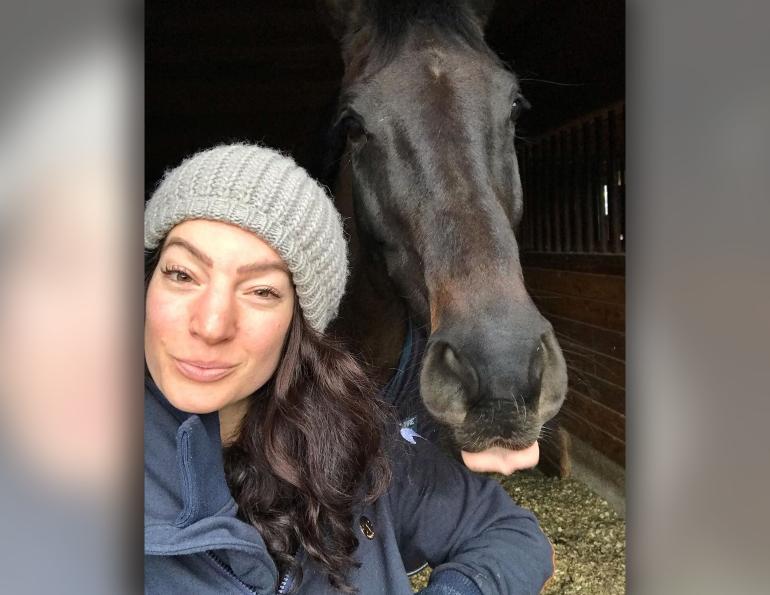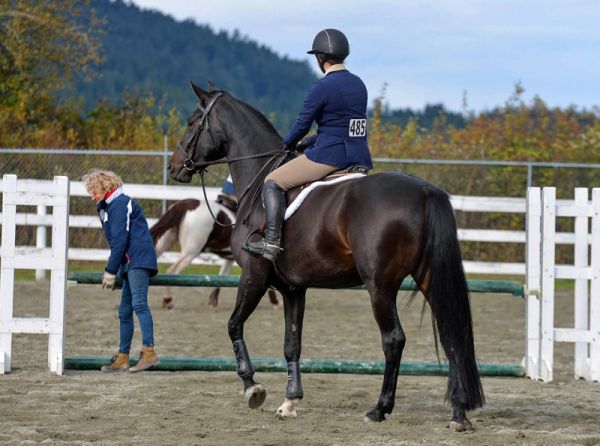After five amazing rides in a row, I was excited to solidify the work we had done before giving my mare, Fire, a day off. But when I got to the barn and tacked up, I noticed there was a little bit of filling in her right front leg, but not enough to alarm me. Then we picked up the trot and I quickly realized that Fire was very lame. Since no one was around for a second opinion, I got off and put her on the lunge line, only to confirm that yes, she was not sound.
Upon closer inspection, the leg was a little warm to touch and had more swelling in it than I had initially thought. While my first instinct is to panic... call the vet, notify the insurance company, cry a little, and essentially completely overreact… instead I did what I always do: cold hose, compression, and try to stay calm. The swelling went down a little after hosing, which was encouraging, and I also put on her EquiCrown compression wraps to provide support.
The next morning when I removed the wraps the swelling was almost gone, but I stuck with the cold hosing and compression wraps for a couple more days. After about three days the swelling was completely gone, and I stopped hosing and wrapping. Then came the day of truth. I brought Fire in from the field and was going to ride to see if she was sound — preferring that to trying to lunge a horse who had just had four days off. But she was so wild in the cross-ties that I ended up putting her on the lunge anyway, and thankfully she was very sound.

Now, this situation is one that I have navigated many times with Fire, and with countless other horses, too. But that doesn’t make it any easier. Every time a horse of mine takes a slightly unsound step, it’s hard to not jump ahead to imagining worst case scenarios. This time, given the location of the swelling, I had started researching tendon injuries, which certainly didn't help me with the “try to stay calm” part.
A couple of years ago a friend of mine told me about her five-day rule: If a horse is lame, but not lame enough to warrant immediately calling the vet, use supplementary care, rest, and wait five days. If after five days the horse isn’t better, then it is time to call the vet. I think this mindset is very helpful and worth sharing. It’s hard to navigate injuries when your patient doesn’t speak, but if we remain calm, assess the situation, possess a basic knowledge of first aid care, and know when to call the vet or farrier, we can usually find our way.
"One of the best lessons you can learn in life is to master how to remain calm." - Catherine Pulsifer

























